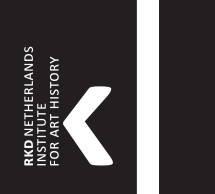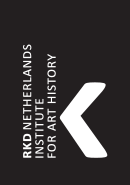2.1 Omitted Flemish Artists
Gerson believed that the greatest failing of his mandate was that he was forced to ignore most Flemish art (even though he could not have completed the book within the set time limit if he had not done so).1 ‘The competition presupposes a clear distinction between Dutch and Flemish art and excludes Flemish influences. It is nevertheless a fact that the two related cultures impacted foreign countries, with the Flemish one at times dominant’.2 Flemish artists therefore regularly found a place in his publication, especially in his chapter on Poland and Danzig, which starts more or less arbitrarily with the arrival of Hans Vredeman de Vries (‘a Dutchman by birth but a Southern Netherlander as far as his art is concerned’)3 in Danzig in 1592.
By 1473 the church of Saint Mary in Danzig was graced by the famous triptych with The Last Judgment by Hans Memling [1], who had painted it in Bruges on commission from Angelo Tani (1415-1492), a representative of the Florentine Medici banking family. The altarpiece, which was intended for a church in Fiesole, was shipped to Italy but was pirated off the coast of England by Hanze captain Paul Beneke of Danzig, who took it to his native city. Many altars by Flemish artists were exported to Poland during the 15th and 16th centuries.4 Long before Hans and Paul Vredeman de Vries arrived in Danzig there was a demand for paintings, especially those by Southern Netherlanders.
Gerson worked his way through all of the volumes of the Thieme/Becker Künstlerlexikon that had come out by 1938. Not a single Dutch painter or draftsman who had worked abroad (or vice versa) according to the lexicon escaped his attention.5 Nor did he overlook many Southern Netherlanders of the 17th century who were active in Poland. Gerson did not mention Hendrick Aerts (1567/1575-1603) [2], who (just like the Van Obbergen and Van den Blocke families) supposedly came from Mechelen (Malines) and who probably became apprenticed to Paul Vredeman de Vries in Danzig. However, this was more a consequence of it not being known back then that Aerts had worked in Danzig, than of his being a Southern Netherlander.6
In addition to Hendrick Aerts, Philips van Liesaert IV (1590-1632), goes missing. He was a scion of an Antwerp dynasty of history painters, of which most members are known only from archival documents. In 1613 Van Liesaert IV was in Danzig, where he received a letter of recommendation.7 We have recently learned that Jacob Liscornet the Elder (c. 1590-1676), a Danzig history painter, came from Antwerp,8 and that Isaak van den Blocke, whom Gerson does discuss, had an Antwerp partner named Gerard van Kessel.9 Their names surfaced through the extensive archival research on artists in Danzig, undertaken by Janusz Pałubicki, which was published in 2009.
The painter Vitus Heinrich [3],10 who for the most part lived in Elbing (Elbląg) from as early as 1634 to his death, was presumably also from Flanders, having been trained there. The Antwerp still-life painter Peter van Kessel (-1668) must have been in Danzig sometime between 1658 and 1668. The last Fleming in line is Dominicus de Beselaer the Younger (1665/1668-1734), a Catholic history painter from an Antwerp family who worked in Danzig from about 1695 to his death in the city in 1734.11

1
Hans Memling
Last Judgement, c. 1467-1471
Gdańsk, Muzeum Narodowe w Gdańsku, inv./cat.nr. SD/413/M - M/568/MPG

2
Hendrick Aerts
Allegory of love and death, c. 1600-1601
Paris, Brussels, art dealer Galerie De Jonckheere

3
Vitus Heinrich
The capture and sack of a city by Roman soldiers, dated 1643
Private collection
Notes
1 Accurate biographical information on Hendrick Aerts was not published until 1995. See Vermet 1995, Vermet 1996 and Vermet 2006.
2 See Szmydki 1986.
3 Thieme/Becker 1907-1950.
4 Van Roey 1967, pp. 99-100; not in Pałubicki 2009.
5 Pałubicki 2009, vol. 2, pp. 488-492.
6 Pałubicki 2009, vol. 2, pp. 379-381.
7 This painting, which is monogrammed ‘VH’, was auctioned in 2002 as Flemish School, 17th century. In 2005 Marijke de Kinkelder (RKD) attributed it to Vitus Heinrich.
8 Pałubicki 2009.
9 Gerson 1942/1983, p. 5.
10 Gerson 1942/1983, p. 5: ‘Die Preisfrage setzt eine deutliche Scheidung der holländischen und flämischen Kunst voraus und schaltet den flämischen Einfluss aus. Jedoch ist es eine Tatsache, dass die beiden verwandten Kulturen gleichzeitig auf das Ausland wirkten, wobei die flämische zeitweise vorherrschte.’
11 Gerson 1942/1983, p. 498.

